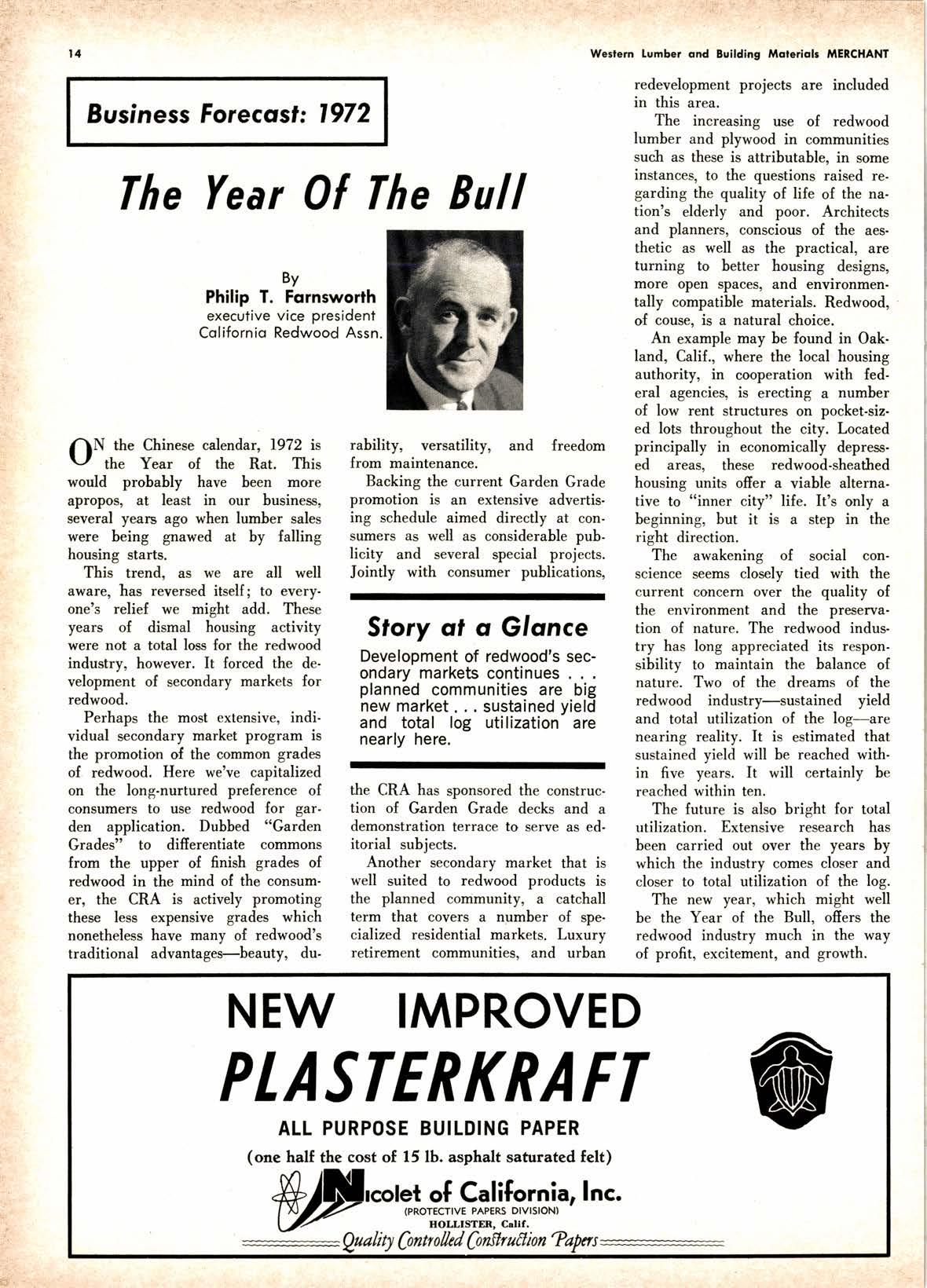
2 minute read
Business Forecosf: 1972 The Year 0f The Bull
By Philip T. Fornsworlh executive vice president Colifornio Redwood Assn.
ffN the Chinese calendar, 1972 is v the Year of the Rat. This would probably have been more apropos, at least in our business, several years ago when lumber sales were being gnawed at by falling housing starts.
This trend, as we are all well aware, has reversed itself; to everyone's relief we might add. These years of dismal housing activity were not a total loes for the redwood industry, however. It forced the development of secondary markets for redwood.
Perhaps the most extensive, individual secondary market program is the promotion of the common grades of redwood. Here we've capitalized on the long-nurtured preference of consumers to use redwood for garden application. Dubbed "Garden Grades" to difierentiate commons from the upper of finish grades of redwood in the mind of the consumer, the CRA is actively promoting these lese expensive grades which nonetheless have many of redwood's traditional advantages-beautyo du- rability, versatility, and freedom from maintenance.
Backing the current Garden Grade promotion is an extensive advertising schedule aimed direcdy at consumers as well as considerable publicity and several special projects. Joindy with consumer publications,
Story dl d Glonce
Development of redwood's secondary markets continues . . planned communities are big new market sustained yield and total log utilization are nearly here.
the CRA has sponsored the construction of Garden Grade decks and a demonstration terrace to serve as editorial subjects.
Another secondary market that is well suited to redwood products is the planned community, a catchall term that covers a number of specialized residential markets. Luxury retirement communities. and urban redevelopment projects are included in this area.
The increasing use of redwood lumber and plywood in communities such as these is attributable, in some instances, to the questions raised regarding the quality of life of the nation's elderly and poor. Architects and planners, conscious of the aes. thetic as well as the practical, are turning to better housing desigas, more open spaces, and environmen. tally compatible materials. Redwood, of couse, is a natural choice.
An example may be found in Oak. land, Calif., where the local housing authority, in cooperation with federal agencies, is erecting a number of low rent structures on pocket-sized lots throughout the city. Located principally in economically depress. ed areas, these redwood-sheathed housing units ofier a viable alternative to "inner city" life. It's only a beginning, but it is a step in the right direction.
The awakening of social science seems closely tied with current concern over the quality the environment and the preservation of nature. The redwood industry has long appreciated its responsibility to maintain the balance of nature. Two of the dreams of the redwood industry-sustained yield and total utilization of the log-are nearing reality. It is estimated that sustained yield will be reached within five years. It will certainly be reached within ten.
The future is also bright for total utilization. Extensive research has been carried out over the years by which the industry comes closer and closer to total utilization of the log.
The new year, which might well be the Year of the Bull, ofiers the redwood industry much in the way of profit, excitement, and growth.










